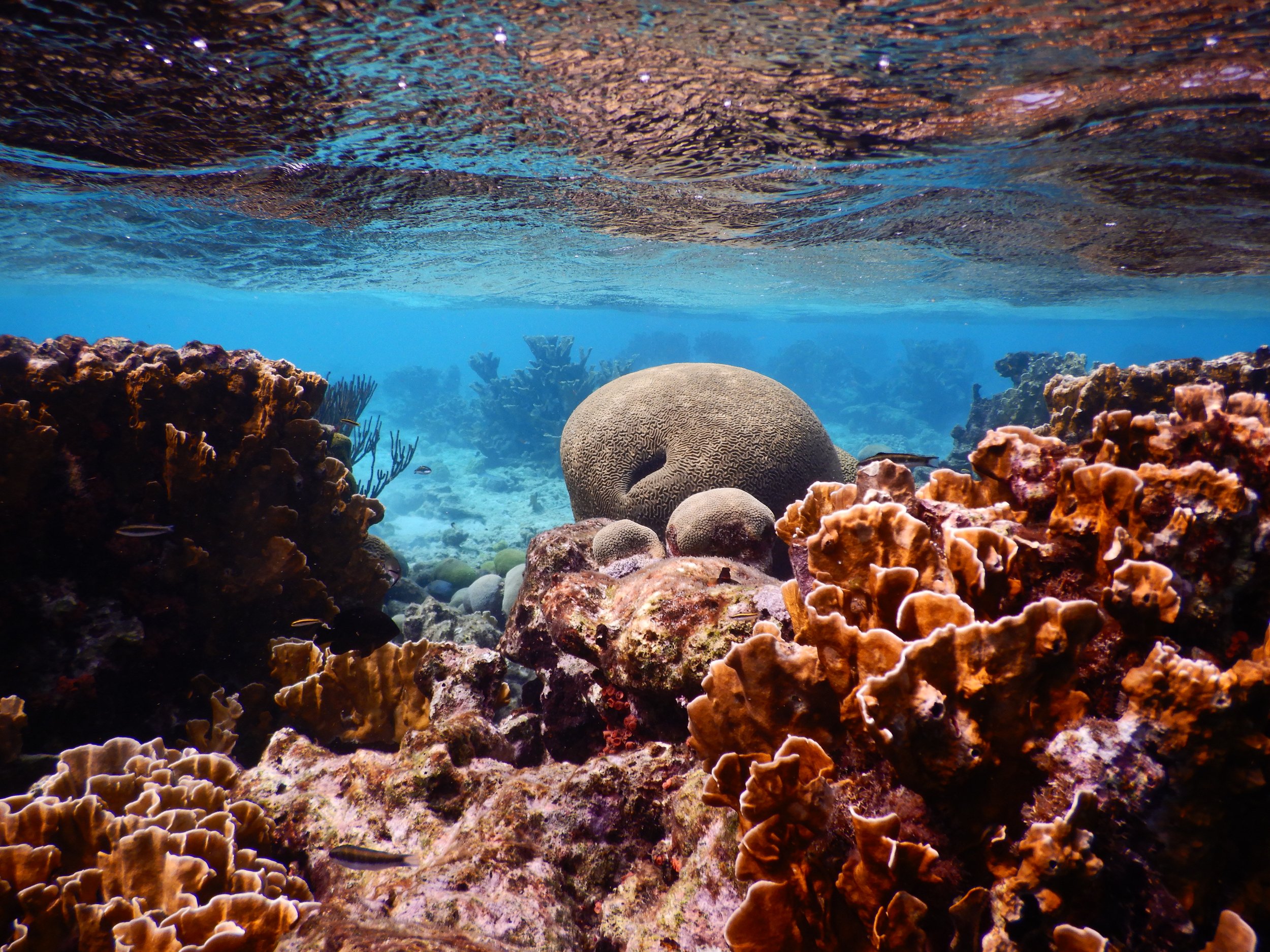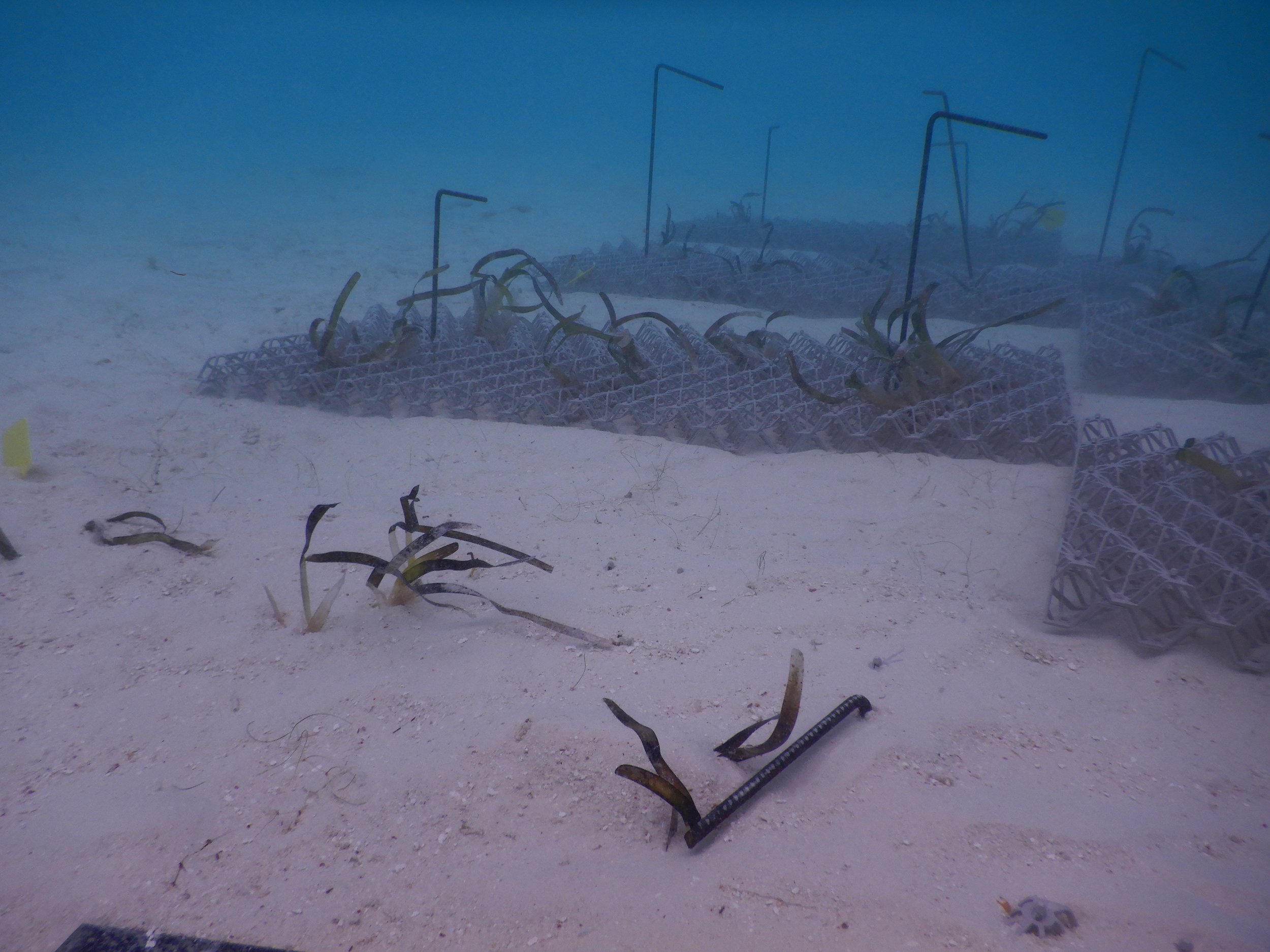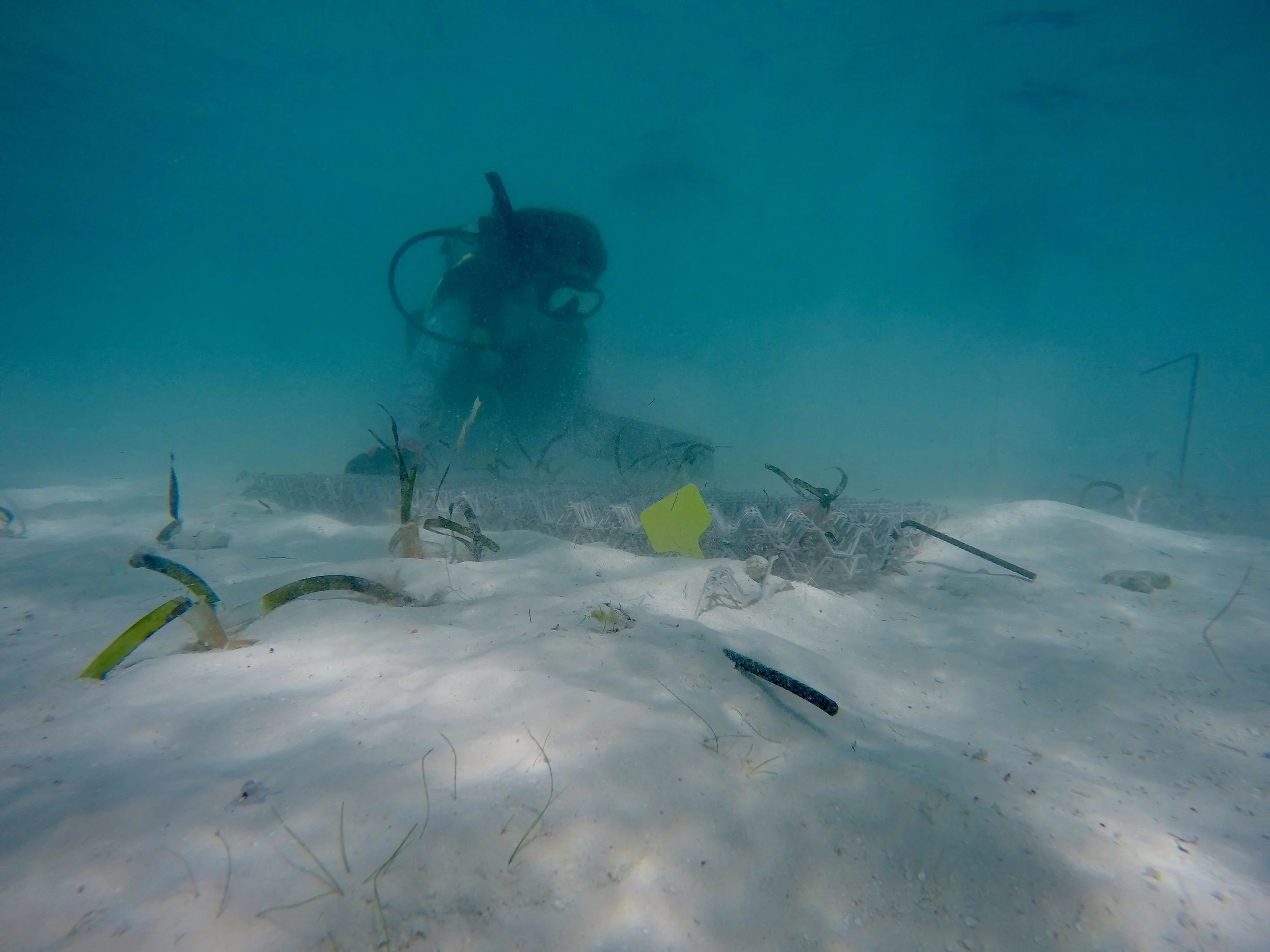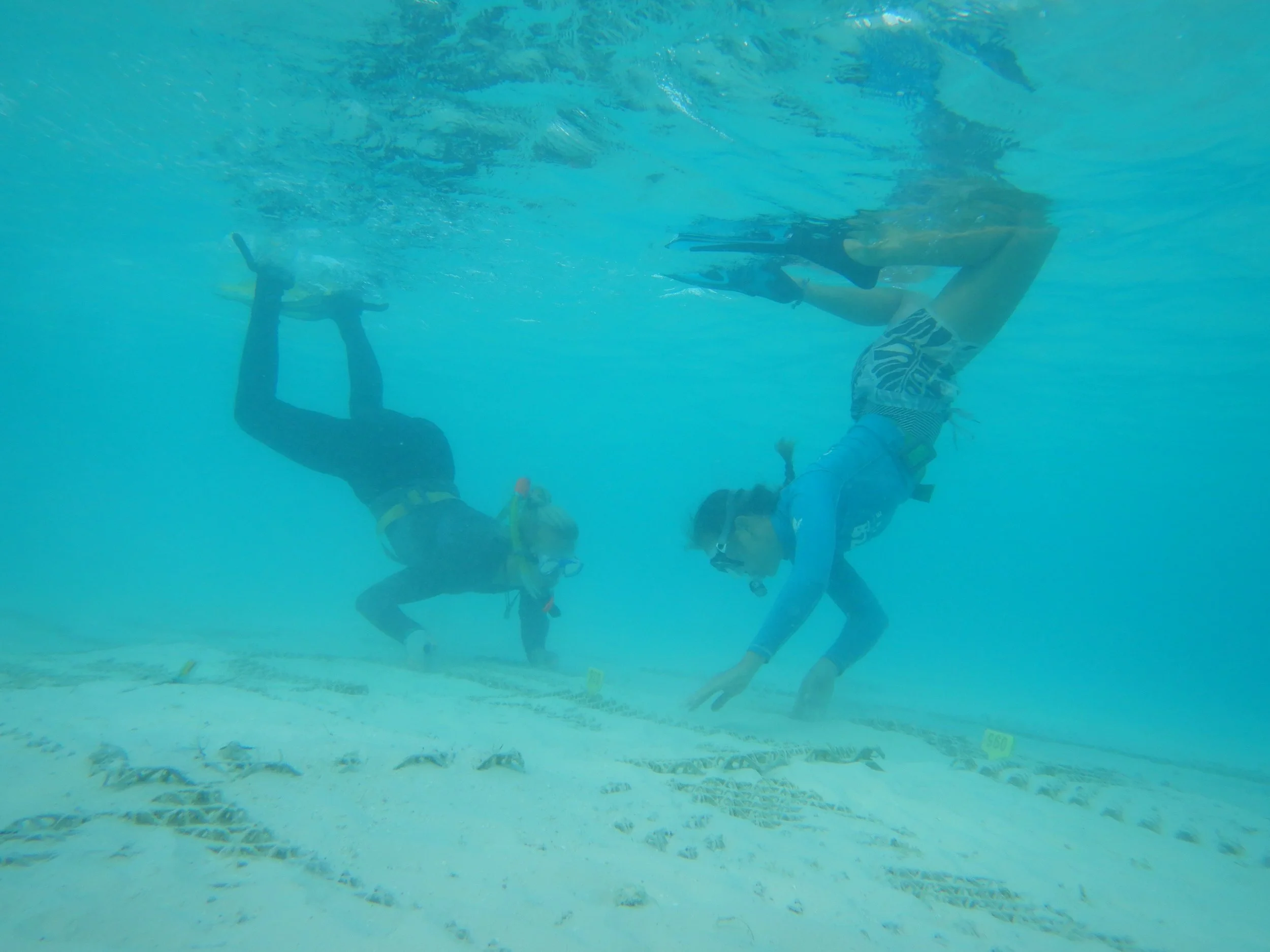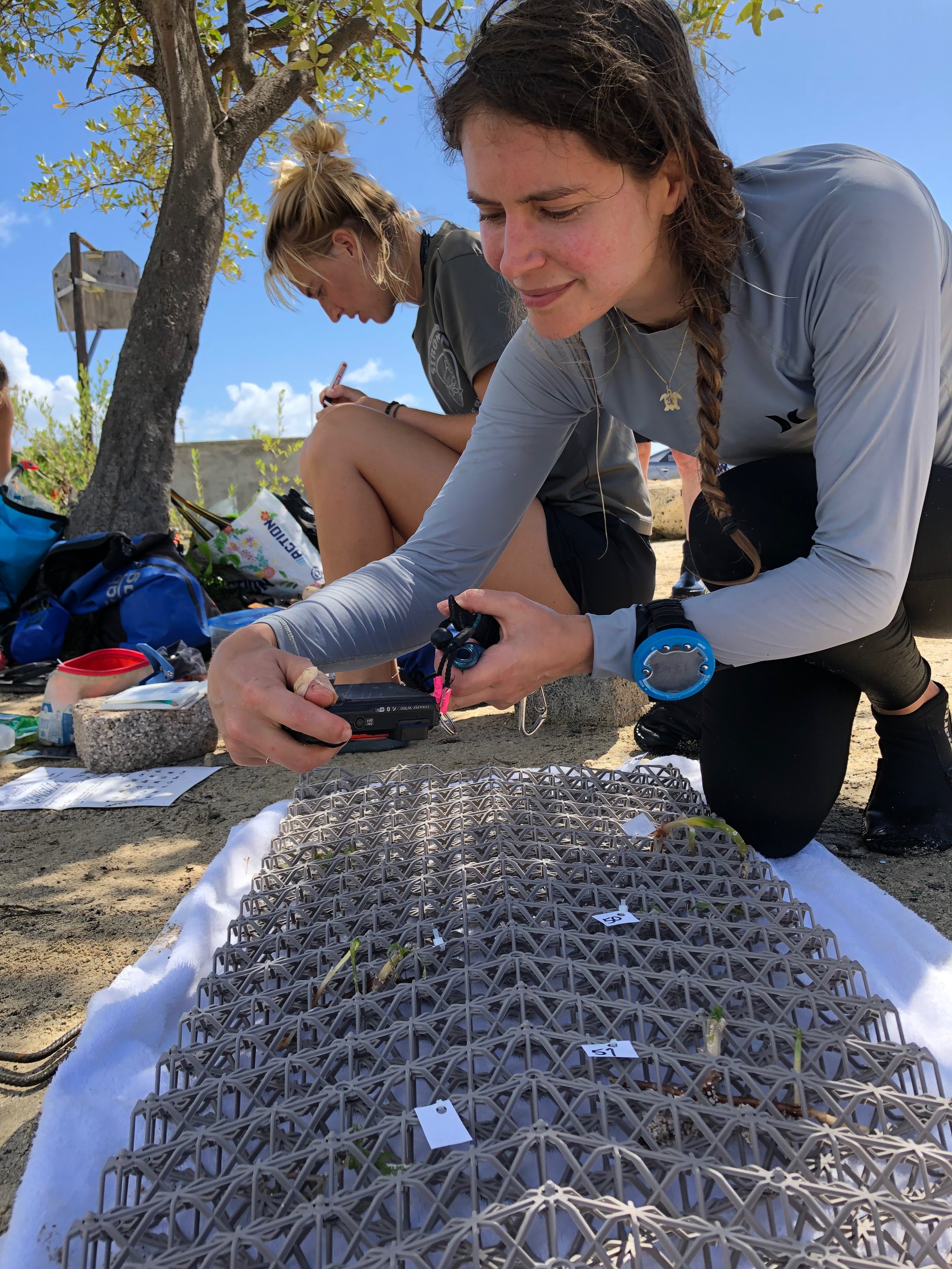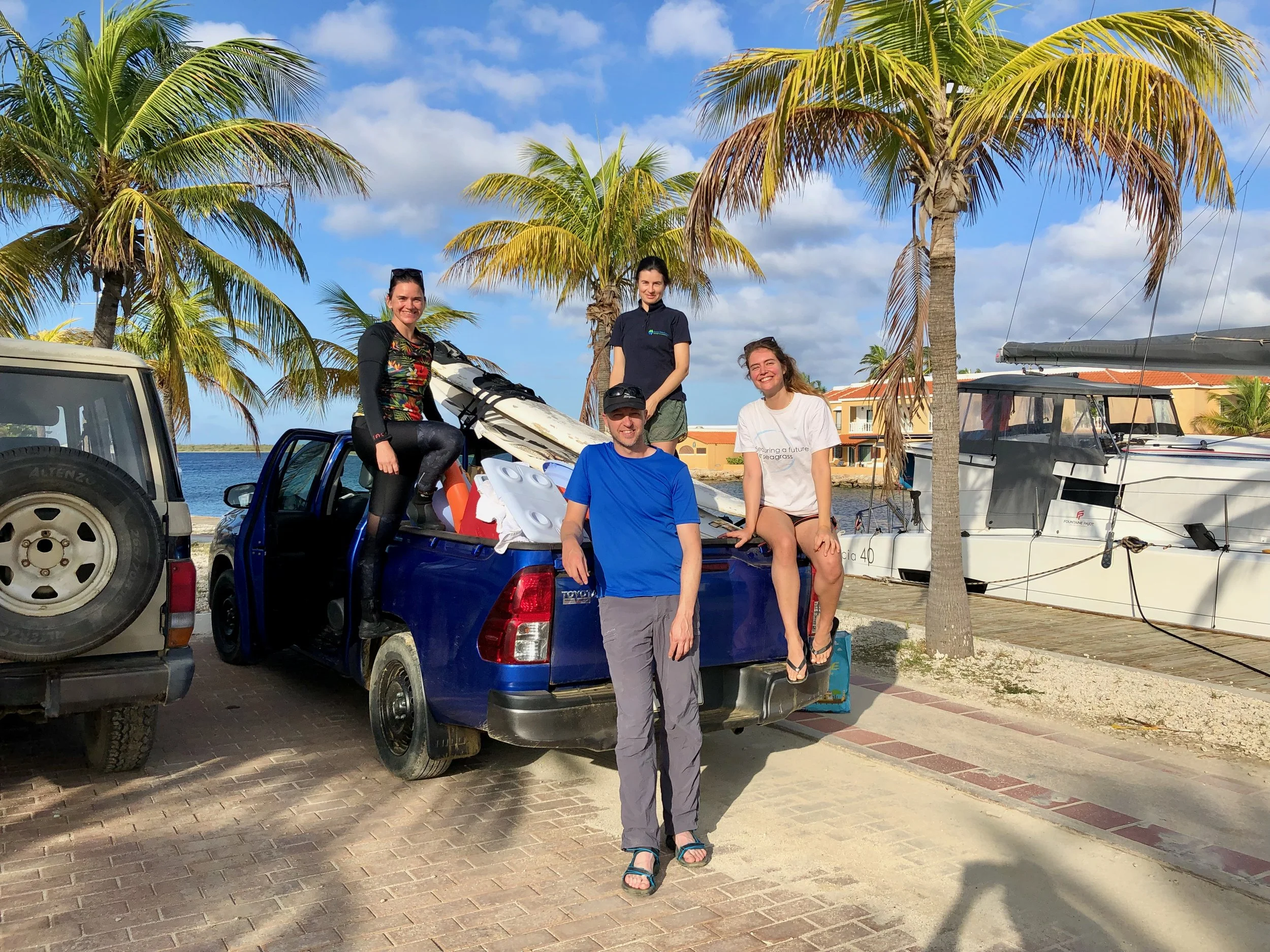Fieldtrip Bonaire: Seagrass and mangrove restoration
Near the end of 2021, we organized a fieldtrip to Bonaire with a focus on seagrass and mangrove restoration. Together with STINAPA and BESE-products funding was obtained to restore a large patch of seagrass, and set up some smaller scale restoration experiments, making use of ‘BESE elements’: biodegradable 3D mats mimicking complex root structure. The BESE elements can be used to reduce hydrodynamic stress and therefore help ecosystem engineers as seagrasses, mangroves and oysters overcome the first barrier on their way to successful settlement and expansion.
As part of our team 2 students joined who will work on this project for their Msc thesis at Wageningen University. We worked hard for one week trying out different methods and visiting various sites for our experiments: we needed sites with substantial amount of wave action, but otherwise suitable environmental conditions for our target species to grow. For the seagrass, we chose a logistically hard to reach but otherwise perfect site for our large-scale restoration, and chose a checkerboard fashion to deploy the BESE elements. We spend several days planning logistics and then a whole day digging the sheets (with seagrass fragments) in the sediment by hand, and managed to finish a large plot, spending 8hrs non-stop underwater.
After one week, I stayed on with just the students and our local collaborators to finalize the mangrove and seagrass experiments. For the mangroves, a site along the south west shore was chosen: this region lies relatively low compared to the sea level, and could definitely use some sediment accreting mangroves protecting the shoreline. Another seagrass experiment was set up looking into differences of native and invasive seagrass restoration in Lac Bay.
This was a great two week fieldtrip with a super motivated and full-of-energy team, and I’m super excited to discover what the students will find out during their fieldperiod. Updates will follow! See below for an impression of our time on the island.
